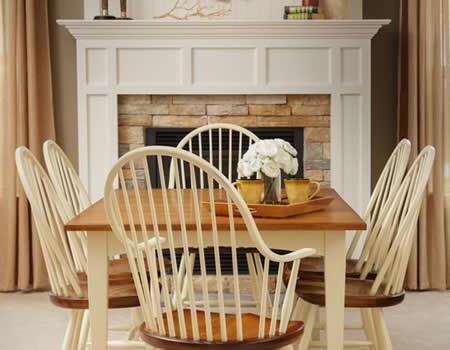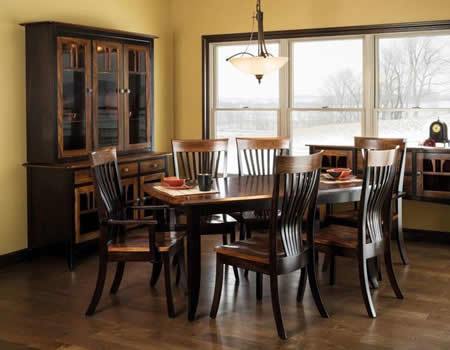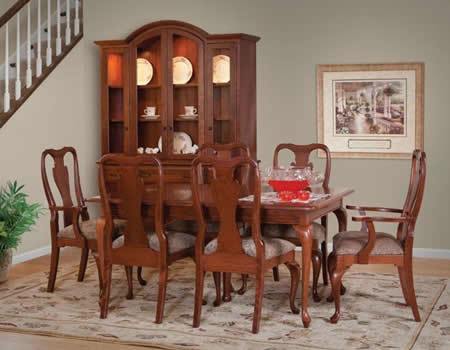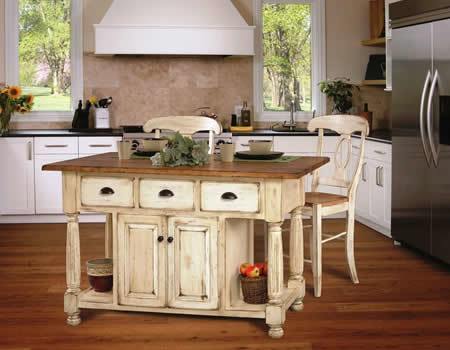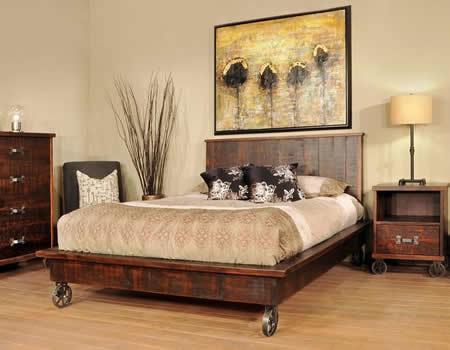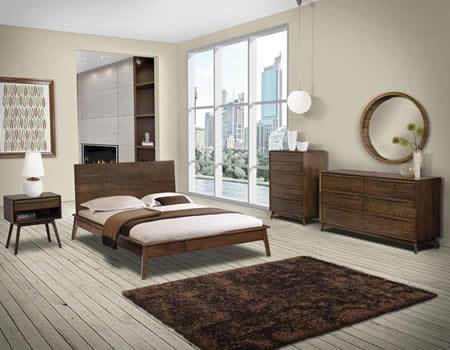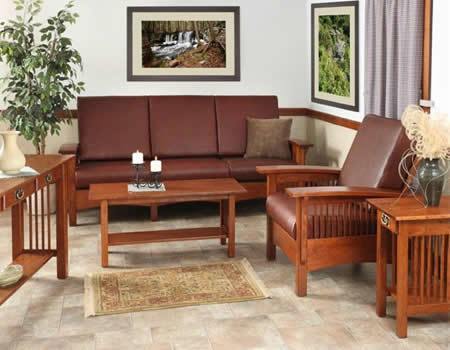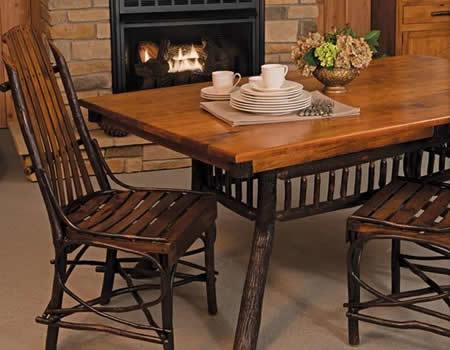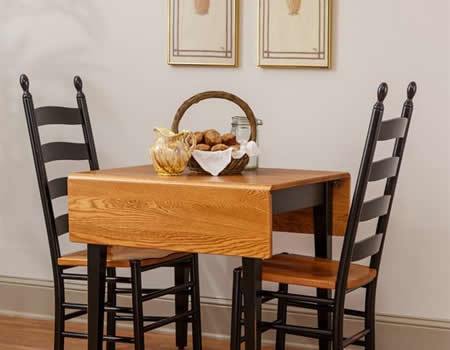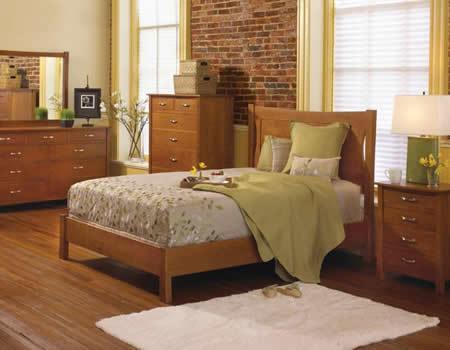Contact our Furniture Specialists
Phone: 941-867-2233
Monday-Saturday: 9 a.m. to 6 p.m. ET
Sunday: 11 a.m. to 7 p.m. ET
Phone: 941-867-2233
Monday-Saturday: 9 a.m. to 6 p.m. ET
Sunday: 11 a.m. to 7 p.m. ET
Log cabin furniture has been found in the U.S. since the 1800s as settlers expanded into the West and began to build furniture for their log cabin style homes with the little tools they had. It has also been a popular option for furnishing cabins, lodges, and country homes for decades. It wasn’t until the early 2000s however that log styles began to gain more mainstream recognition as rustic furniture and home décor trends exploded.
While still most commonly found in mountain and lake retreats, log cabin furniture is becoming a popular option in a variety of home styles as its use of whole logs and embrace of “imperfections” offer the reminder to slow down by adding a little bit of rustic, a little bit of mountain and forest, and a little bit of long ago into any style home.
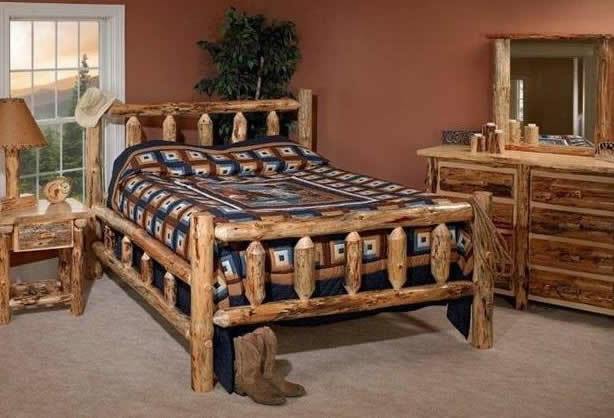
You can’t write about the history of log furniture without mentioning the history of the log cabin.
Log cabins date back to about 3,500 BC in northern Europe. It is believed that Finnish and Swedish immigrants built some of the first log cabins in America when they began to settle in the U.S. in the 17th century.
Log cabins were a popular choice for early settlers because they had limited resources and the only things needed to build a log home were trees, an axe, and saw. Log cabins could also be built fairly quickly by just one person and were known for their sturdiness and durability.
Once the cabins were built, their inhabitants needed furniture. Again, limited tools and abundance of trees led to the creation of log furniture. And, just like log cabins, log furniture became valued for its sturdiness and longevity.
Log furniture remained a popular furniture choice for a while after cities began to be built in the West, not only because of its durability but also because of its ties to the outdoors that help create a natural, soothing environment.
As the country continued to grow and become more modernized, rustic style furniture like log furniture fell out favor, though it remained a popular option for furnishing mountain homes and lake retreats.
Rustic furniture became a sought after style again in the 2000s thanks to its natural, rugged look that brings the outdoors in, helps to add a sense of calm to any space, and is a reminder of a time when life was simpler and slower-paced.
Log cabin furniture can be made from a variety of wood types, though most commonly found in aspen, cedar, pine, and walnut.
Log furniture made from real wood is considered premium and is more costly due to its handcrafted, one-of-a-kind nature.
As the desire for budget furniture increased over the years, it is possible to purchase mass-produced log furniture made from engineered wood. Though this option is more economical, log furniture from composite wood tends to not be as durable. It also requires more energy to make and may contain harmful chemicals, making it less eco-friendly than log furniture made from wood harvested from sustainable forests or trees that are dead but have not yet fallen.
Log cabin furniture from DutchCrafters is made from aspen or cedar wood or dead-standing (trees that are dead but have not fallen over) lodgepole pines.
Before construction of the furniture can begin, the logs are heat treated or allowed to air dry. Once dry, the bark will typically be removed unless it is part of the design.
The mortise and tenon method used for joining the logs to one another is not only reminiscent of the old way of making furniture, but it is also the method that produces some of the strongest, most durable furniture. The interlocking nature of mortise and tenon means that the furniture holds itself together even if a powerful adhesive isn’t used to lock each into the joint.
Log furniture may be finished by sanding and applying varnish.

Log furniture tends to be heavy and have a sturdy look since it is made from round logs.
While log furniture can be stained to match other pieces in your home or to achieve a certain look, most people prefer to have it finished without stain to showcase the natural beauty of the wood.
Along with mortise and tenon construction, “imperfections” (both natural and man-made) are common characteristics of log furniture.
Checking, or the cracks that form on the logs while drying, add to its rugged beauty. Knots are also an expected imperfection, and gnarled wood may be used to enhance designs. Carvings may also be added as a unique element.
Assembled by hand and made to order in your choice of rustic pine, apsen, or red cedar, we offer a variety of unique log furniture pieces that are sure to make just the right impact and breathe new life into your space – no matter the style. From log bedroom furniture, dining room furniture and living room pieces, to gun cabinets, desks, and bathroom vanities, you will find the perfect Amish-made rustic log furniture to bring the beauty of nature into your home.


